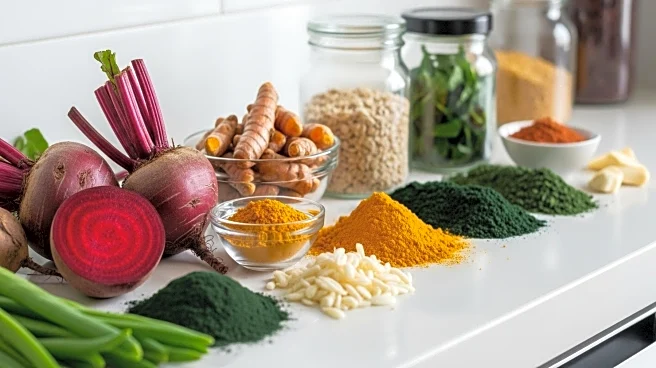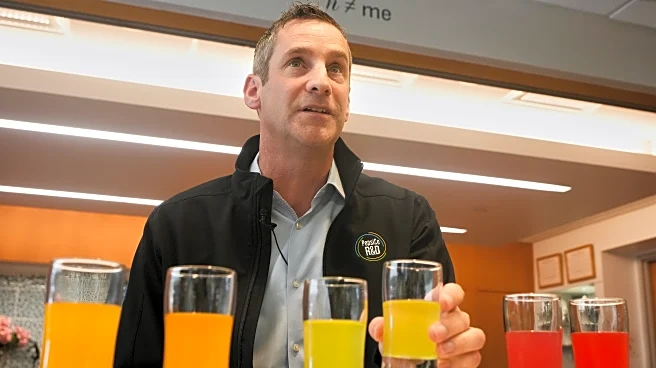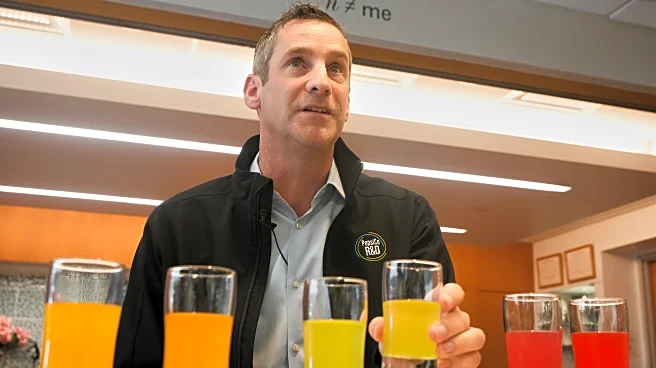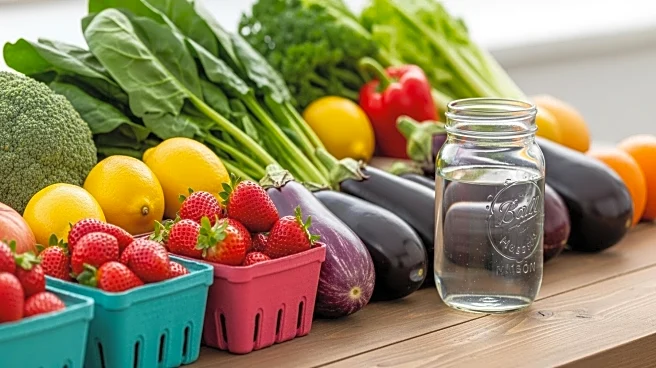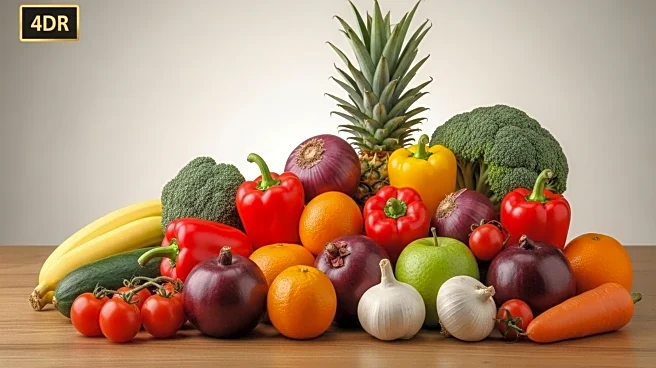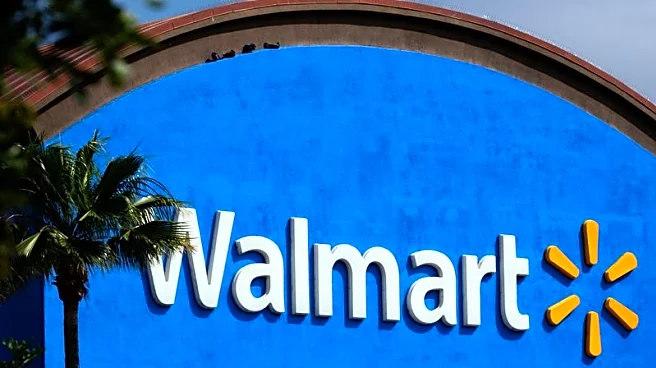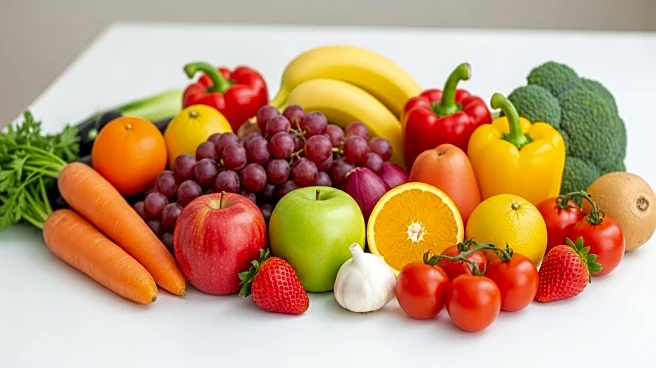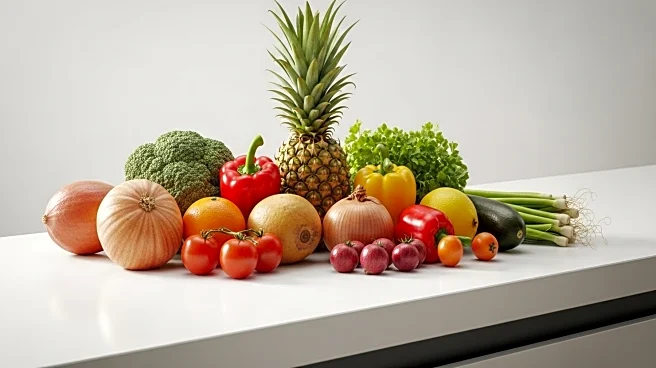What's Happening?
PepsiCo is advancing its initiative to replace synthetic dyes with natural colors in its U.S. products, responding to increasing consumer demand for healthier options. Currently, about 40% of PepsiCo's U.S. products contain synthetic dyes. The company is exploring natural alternatives such as paprika and turmeric for products like Flamin' Hot Cheetos, and purple sweet potatoes for beverages like Mountain Dew. This transition is part of a broader industry trend, with the U.S. Food and Drug Administration expediting the approval of natural additives. PepsiCo's efforts include extensive testing to ensure new formulations meet consumer expectations for taste and appearance.
Why It's Important?
The shift to natural colors reflects a significant change in consumer preferences, driven by health concerns and social media influence. This move could impact the food and beverage industry by setting new standards for product formulation and marketing. Companies like PepsiCo must balance consumer demand for natural ingredients with the need to maintain product appeal and cost-effectiveness. The FDA's role in approving new natural additives is crucial, as regulatory support can facilitate industry-wide changes. This transition may also influence public policy, as states like West Virginia and Arizona have already banned artificial dyes in school lunches.
What's Next?
PepsiCo plans to introduce naturally dyed Tostitos and Lay's chips later this year, with dips following early next year. The company continues to test new ingredients and consumer responses, aiming to complete the transition by the end of 2026. The FDA's ongoing approval of natural additives will play a key role in this process. As consumer demand for transparency and healthier options grows, other companies may follow suit, potentially leading to broader industry changes. PepsiCo's success in this initiative could influence competitors and shape future product development strategies.
Beyond the Headlines
The move towards natural colors raises ethical and cultural questions about food safety and consumer rights. It challenges the industry to reconsider long-standing practices and adapt to evolving consumer values. The transition may also prompt discussions on the environmental impact of synthetic dyes and the sustainability of natural alternatives. As companies navigate these changes, they must address potential cost implications and ensure equitable access to healthier products. This shift could lead to long-term changes in consumer behavior and industry standards, emphasizing the importance of transparency and innovation.


